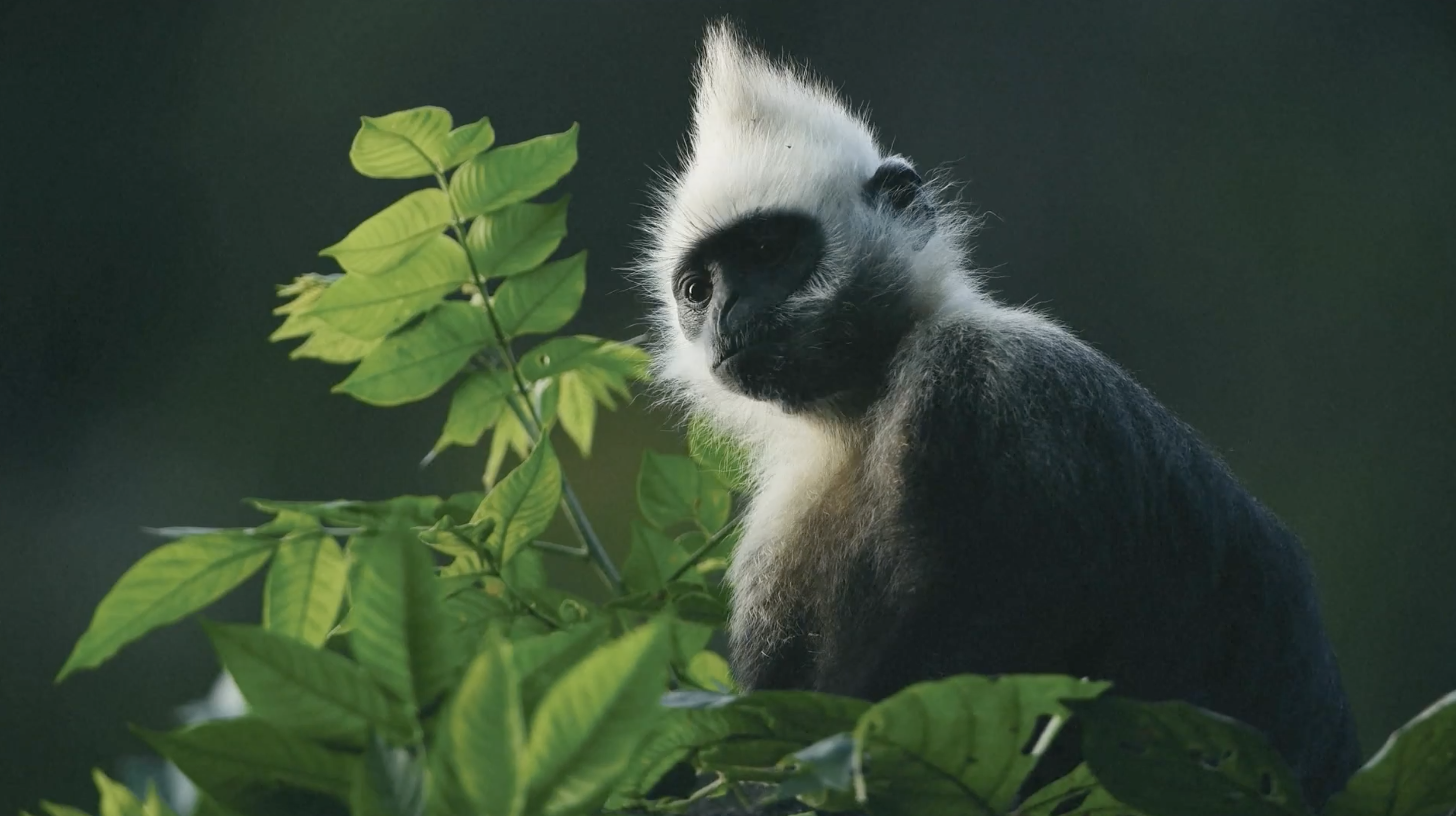01:03

A team of forest rangers has dedicated years to protecting white-headed langurs, with their conservation efforts helping to ensure a thriving population of the critically endangered species in a nature reserve in south China's Guangxi Zhuang Autonomous Region.
About 90 percent of white-headed langurs live in four regions of the Guangxi Chongzuo National Nature Reserve. Each family occupies a cluster of hills, with tree leaves being their primary source of food.
The animal was listed as critically endangered by the International Union for Conservation of Nature and it is classified as a first-class state protected animal in China.
In 1982, Chongzuo's local wildlife sector established a protection station to conduct routine observation of the rare primates in the mountainous areas. Back then, 19-year-old Tang Lifeng became one of the first pioneering members of the patrol team.
"When we were patrolling and couldn't see any of the monkeys sometimes, we would imitate their sounds and they would then respond immediately, so that we could find them and see how many of them there were," said Tang.
About a decade later, China launched six national-level forestry projects of natural forest and wildlife protection, which paved the way for the rebound of a number of white-headed langur groups. While helping set up a comfortable habitat for the monkeys to thrive, Tang also explored ways to gain trust from the intelligent creatures.
"We take it slow when building up connections with them. They won't run away and are very friendly to us. They know well that we won't hurt them so they never run from us," Tang said.
The ranger team at the nature reserve has expanded in recent years, with up to 50 members now. Following long-term monitoring of white-headed langurs in the reserve, the rangers have mapped out the distribution areas of the over 130 subgroups of the monkey and documented separate files for them.
The reserve has been exploring feasible ways to solve habitat fragmentation caused by existing farmlands and roads spreading beneath the hills. Habitat fragmentation is likely to intensify inbreeding, lowering the genetic diversity of the species, the head of the reserve said.
The reserve, therefore, built two "corridors," which were constructed with reinforced concrete and rails to prevent monkeys from being hit by vehicles, while using plants favored by the monkeys to guide their migration.
"We hope to create a better and better living environment for the white-headed langurs. With generations of efforts, we hope to keep increasing the population of the monkey and let our offspring still be able to see the white-headed langurs," said Meng Yuning, another staff member of the nature reserve.
The population of white-headed langurs in Chongzuo has surged from around 300 in the 1980s to more than 1,300, according to the latest data from the National Forestry and Grassland Administration.
(Cover image is a screenshot)
(If you want to contribute and have specific expertise, please contact us at nature@cgtn.com.)

